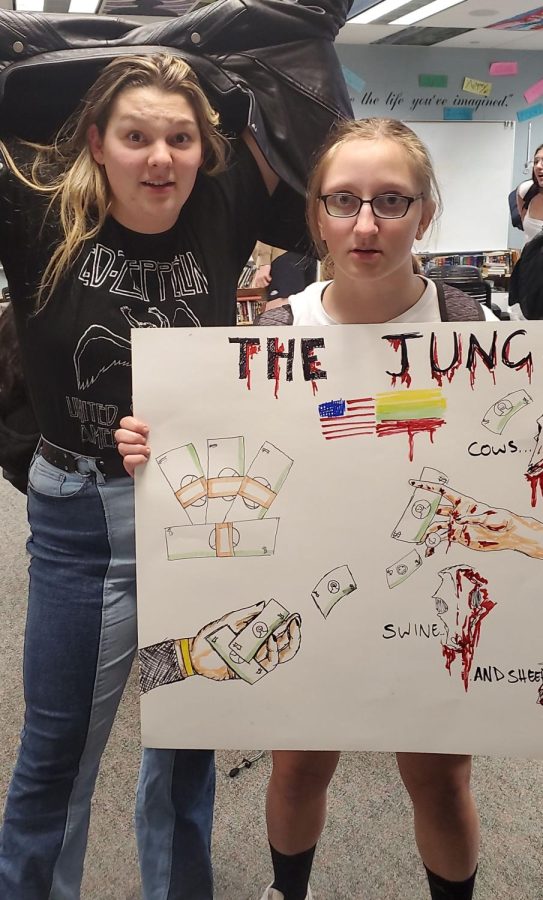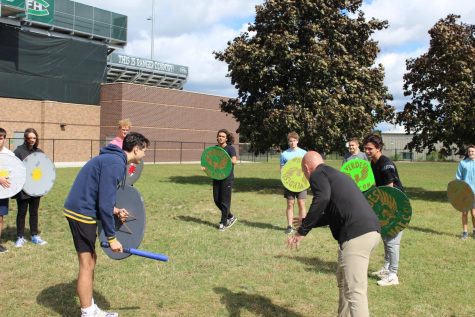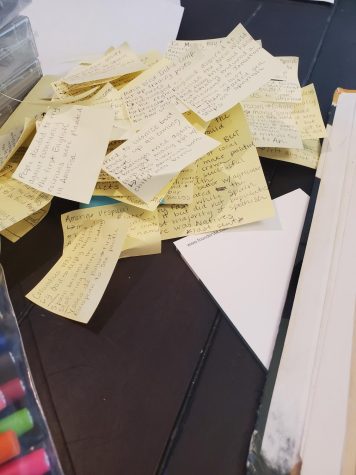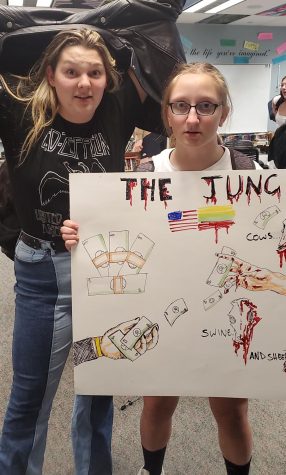Tried and untrue: traditional teaching methods desperately need a revamp
An example of hands-on learning in which my group mates and I created a poster based on our assigned book for a class contest.
Most teachers in the current educational system in the United States teach in a manner that leads to about a 30% information retention rate for students. With several alterations, students could be retaining up to 75% of the information while being more engaged, applying multiple skills that can be put into practice elsewhere in life, and enjoying class time much more than they typically would.
The former method, which is learning through demonstrations and lectures, is commonplace in the majority of classrooms. Obviously, there is value in this as a way to introduce a subject and steer students in the right direction. Lectures and demonstrational learning have value and can help increase attention span but should never be the only method used for education.
Hands-on learning easily beats out other types in multiple fields. To begin with, these enriching activities engage both sides of the brain, so students are strengthening many areas of their minds. Standard lectures and demonstrations may only engage the left hemisphere, which controls listening and analytical processes. However, hands-on activities also activate the right hemisphere, which uses visual and spatial mechanics.
Because of the combination of functions being used to store useful information, stronger connections are formed within the brain. Hands-on learning also interacts with the senses by using kinesthetic and tactile methods, which can trigger all five senses, leading to a deeper understanding of the content (sbbcollege.com).
In conjunction with the brain, other body systems are affected, which leads to benefits in learning when doing activities that require movement. When students are up and about, whether it be building, conducting an experiment, or heading outdoors, their blood circulation is improved. This means the most important organ—the brain—is getting more oxygen, which improves attention and focus (thethinkingkid.org).
In addition to biological and mental processes being activated to analyze the content in a more in-depth manner, project-based learning can teach skills beyond attention span that can be applied in all areas of life and experiences later on. An extremely important piece of this is teamwork; although it can be learned elsewhere, when learning and working towards a common educational goal, students must learn to cooperate and compromise while finding the best course of action or plan. When in the classroom listening to a lecture, this is not a trait that is learned.
A second skill that may be learned during hands-on assignments is resilience and problem-solving. In the real world beyond high school, very few things will go to plan, so being adaptable is a necessity. When sitting back and taking notes, this is not something that is required, but when constructing something or speaking publicly, things are bound to trip up once in a while, which requires improvisation on the student’s end. This is an excellent way to prepare for jobs and schedules later on in life.
The most obvious benefit to this type of learning is the enjoyment of students. Although a Harvard University study found that students did not seem to love hands-on work, they tested better, and their distaste for active learning stemmed from the fact that it required more effort.
However, in another study by Everest College, 52% of Americans said they prefer interactive learning and training. This could change with age, as oftentimes, lectures and written instructions are less helpful and interesting than actual, hands-on work.
Regardless of whether or not students prefer this immersive learning, it has been proven time after time that is much more beneficial. While students and teachers might opt for the type of instruction that requires time and effort, if they switch to another style, they will surely reap the rewards by scoring highly on tests and storing their experiences for application elsewhere. Without hands-on, active learning, these students will not gain nearly as much from their time in the classroom and fall behind later in life.




